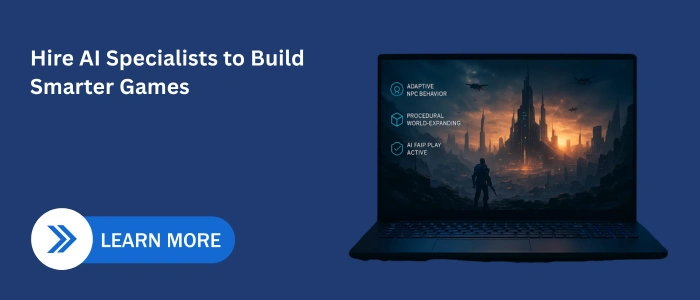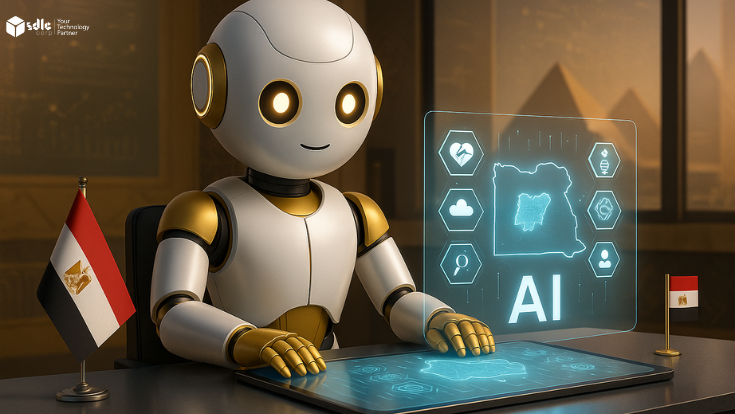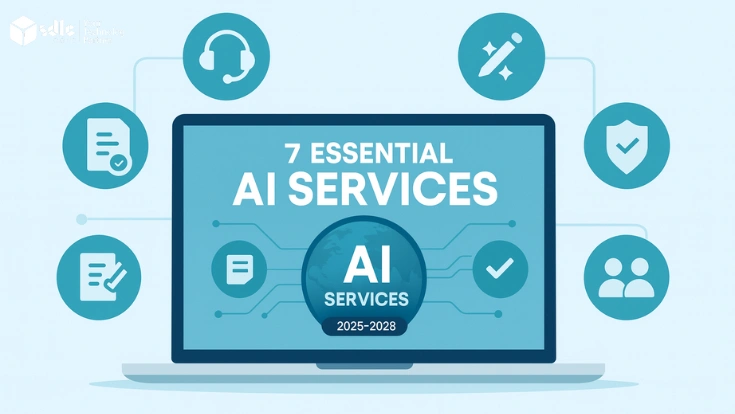Introduction
Artificial Intelligence (AI) is reshaping the gaming industry, making experiences smarter, more immersive, and more personal. Modern games now feature adaptive NPCs, dynamic environments, and responsive gameplay systems that change based on player actions. This shift moves gaming away from scripted, predictable patterns into living, interactive adventures that keep players hooked.
Companies like OpenAI, Unity ML-Agents, and NVIDIA offer AI development services that help studios create smarter environments, generate content automatically, automate testing, and secure gameplay. With these tools, developers can push boundaries and deliver the next generation of interactive entertainment.
The Role of AI in Gaming
AI is no longer a supporting feature; it has become the core of the gaming experience. In fact, its purpose goes beyond simulating intelligence it builds believable, evolving, and interactive worlds that adapt to each player.
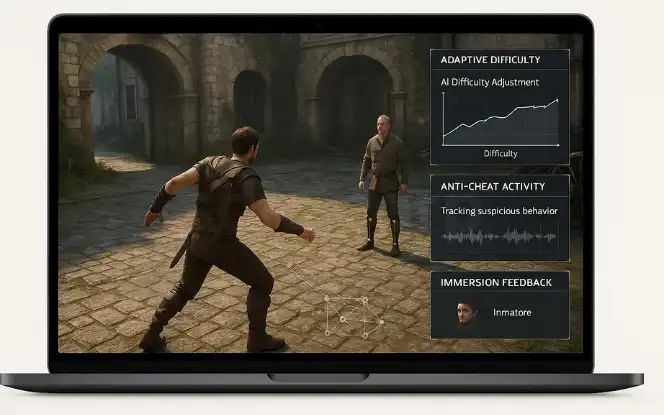
For instance, it adjusts difficulty to match player skills.
It powers realistic animations and character behaviors.
It prevents cheating in online multiplayer games.
Finally, it enhances immersion by responding in real time.
Read more- Generative AI for Gaming
Applications of AI in Gaming
Smarter Non-Playable Characters (NPCs)
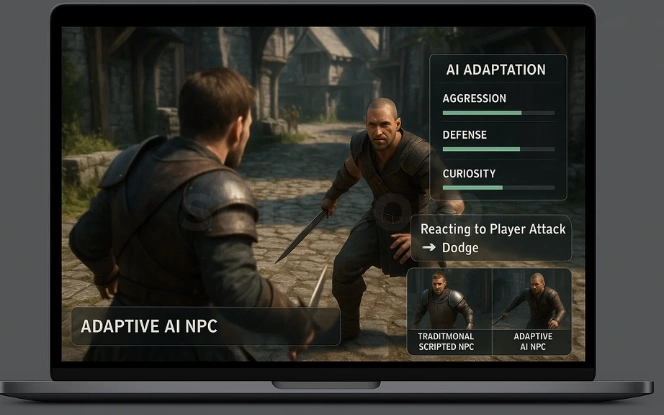
NPCs have evolved from predictable side figures into intelligent, adaptive entities that react naturally to players.
Traditionally, NPCs were guided by fixed scripts.
Earlier games made them repetitive and easy to predict.
Now, AI enables them to adapt to real-time decisions.
As a result, players face unique encounters every session.
Procedural Content Generation (PCG)
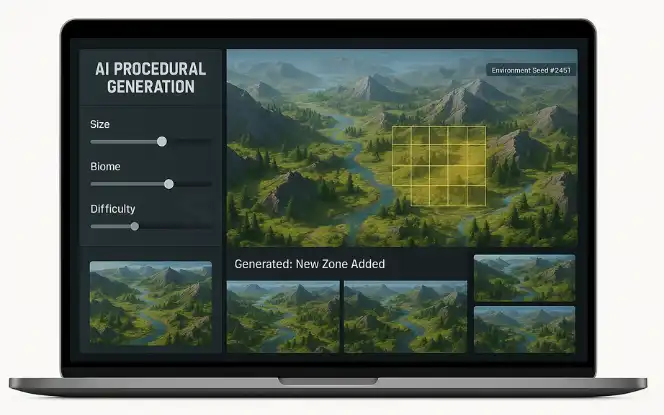
AI enables the creation of dynamic worlds and environments. Consequently, players enjoy fresh experiences each time they enter a game, while developers can expand massive worlds without heavy manual design.
For example, it generates maps, levels, and environments on demand.
It expands large game worlds efficiently.
No two playthroughs feel the same.
Ultimately, this keeps gameplay engaging with endless variations.
Game Testing and Quality Assurance
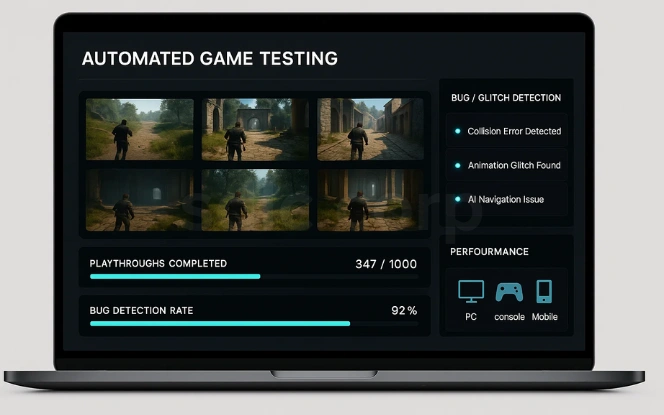
Testing games across devices is massive work. However, AI simplifies the process by automating QA and catching issues faster than humans. In turn, this reduces development time and ensures higher quality standards.
AI runs thousands of playthroughs automatically.
It detects bugs and glitches quickly.
Development time is reduced with automation.
Finally, this ensures higher quality standards.
Personalized Gameplay Experiences
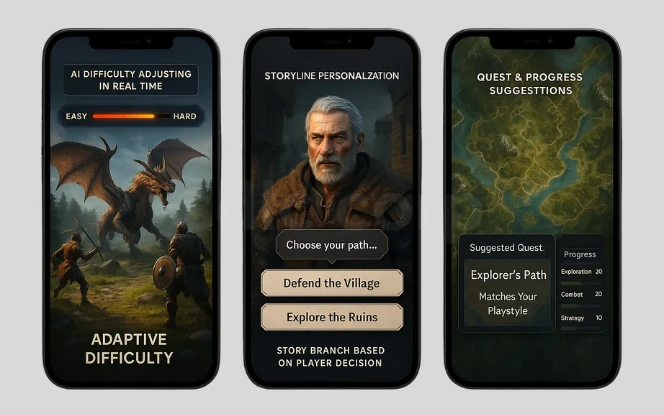
AI customizes the experience for every player. For example, it adapts storylines, challenges, and difficulty to fit individual preferences.
Matches difficulty levels in real time.
Offers storylines aligned with decisions.
Suggests quests and challenges based on playstyle.
As a result, it builds immersion and long-term loyalty.
Realistic Graphics and Animation
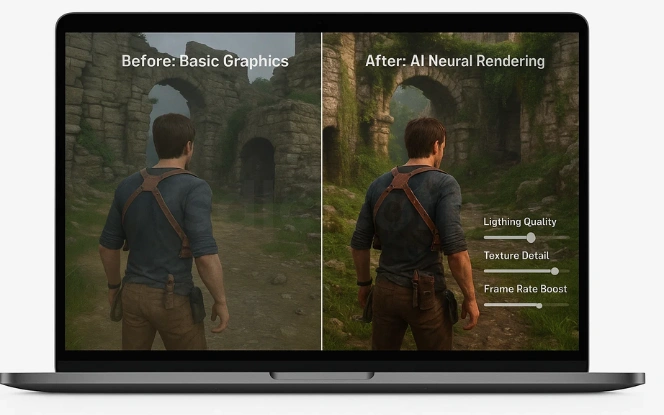
AI is redefining visuals, creating lifelike characters and environments that feel more natural than ever before.
- Improves textures, lighting, and frame rates.
- Produces fluid character movements and animations.
- Enables neural rendering for hyper-realistic visuals.
- Creates immersive, movie-like game experiences.
Conversational AI and Voice Recognition
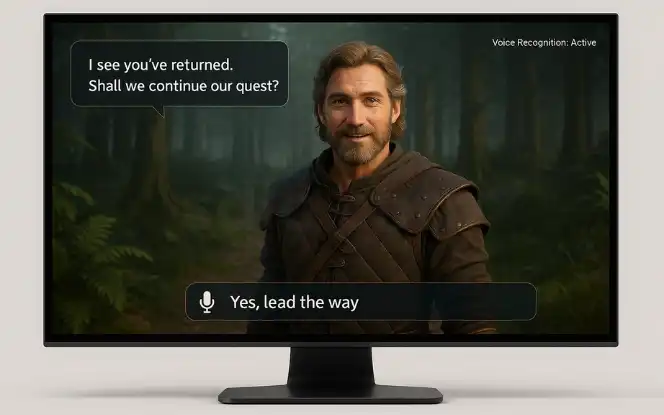
AI brings natural communication into games, allowing players to talk and interact directly with characters.
Instead of menu-driven interactions, players use natural speech.
NPCs engage in context-aware conversations.
It recognizes voice commands for hands-free play.
This way, storytelling deepens in VR and AR.
Read more- What are VR AR MR XR and Its Differences?
Anti-Cheat and Security Systems

AI protects online play by keeping environments fair and secure.
Specifically, it monitors player behavior for unusual activity.
It detects and prevents cheating in real time.
It maintains fairness in competitive matches.
Finally, it safeguards the integrity of communities.
Key Statistics and Trends in AI Gaming
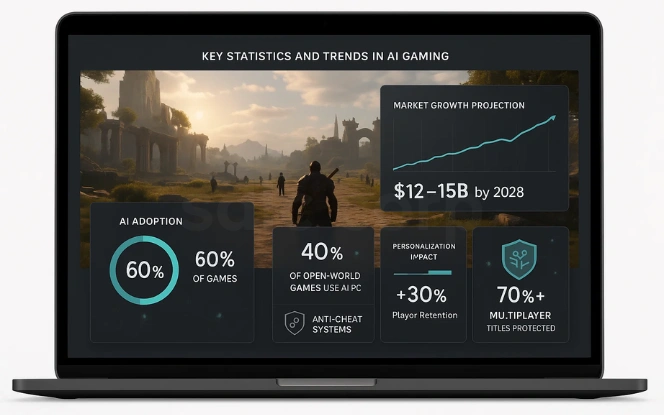
AI adoption in gaming is accelerating, shaping both design and player engagement.
Currently, over 60% of modern games integrate AI features.
The global market will reach $12–15 billion by 2028.
Around 40% of open-world games use procedural generation.
As a result, AI-driven personalization boosts retention by up to 30%.
More than 70% of multiplayer games rely on AI anti-cheat systems.
Traditional Gaming AI vs. Modern Gaming AI
| Aspect | Traditional AI | Modern AI |
|---|---|---|
| Core Approach | Rule-based scripts | Machine learning, reinforcement learning |
| Adaptability | Predictable and repetitive | Dynamic and player-specific |
| Content Generation | Developer-designed, fixed | Procedural, AI-driven, limitless |
| NPC Behavior | Simple and exploitable | Context-aware and adaptive |
| Difficulty | Fixed levels | Real-time adjustment |
| Graphics | Pre-rendered visuals | Neural rendering, lifelike animation |
| Testing | Manual and slow | Automated with bots and detection |
| Player Interaction | Scripted dialogue | Conversational AI and voice recognition |
| Security | Basic checks | Real-time AI monitoring |
| Scalability | Limited by developers | Enhanced by cloud AI and big data |
Challenges of AI in Gaming
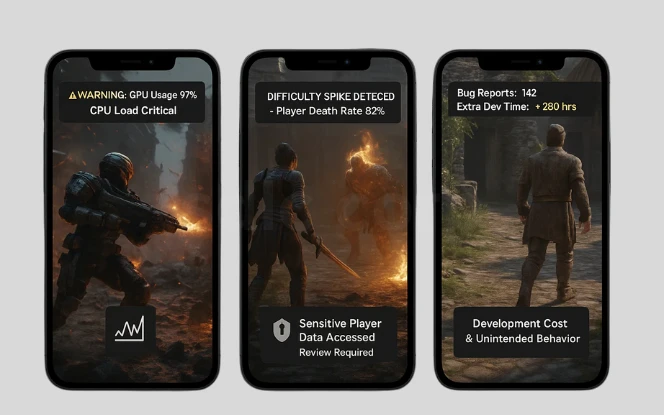
While AI brings benefits, it also introduces challenges. For example, advanced systems push hardware to its limits. At the same time, poorly tuned AI can frustrate players. Moreover, personalization depends on sensitive data, raising privacy concerns. Finally, development costs and unintended AI behaviors add further complexity.
High resource demands: Advanced AI pushes hardware to its limits.
Gameplay balance: Poorly tuned AI can frustrate players.
Data privacy: Personalization depends on sensitive data.
Development costs: AI systems add time and complexity.
Unexpected outcomes: AI may behave in unintended ways.
The Future of AI in Gaming
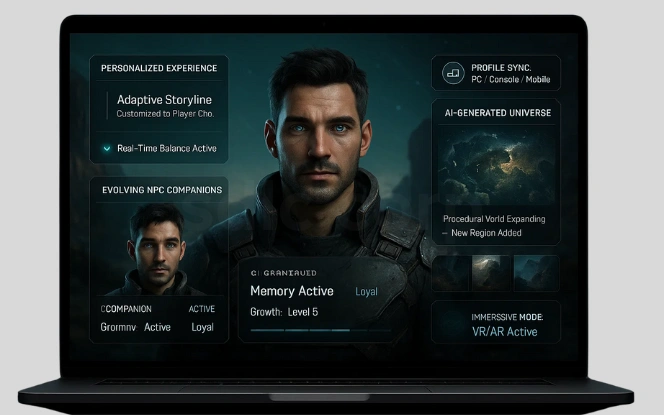
The future of gaming will be shaped by hyper-personalization, lifelike characters, and seamless integration with new technologies. Therefore, AI will not only enhance gameplay but also redefine how players connect with virtual worlds.
Personalized Experiences: Games adapt in real time to player style and decisions.
Evolving NPC Companions: Characters develop memory, emotions, and bonds.
AI-Generated Universes: Expansive worlds are created and updated by AI.
Cross-Platform Profiles: Progress carries across devices consistently.
Immersive VR and AR: AI merges with VR/AR for hyper-realistic adventures.
Conclusion
Artificial Intelligence is redefining how games are built, played, and experienced. In fact, from smarter NPCs and procedural content to enhanced visuals and secure systems, AI has become the center of modern game development. Therefore, studios that hire expert AI developers can transform their ideas into advanced, player-focused experiences.
These specialists bring the skills to design adaptive NPCs, build dynamic worlds, and integrate powerful AI systems that improve testing, security, and personalization. By working with the right talent, studios gain a competitive edge and deliver games that push the boundaries of interactive entertainment. For more consulting tips visit our website – AI consulting services
FAQ'S
What Is The Role Of Ai In Modern Gaming?
AI powers NPC behavior, generates content, personalizes gameplay, and enhances graphics and fairness.
How Does Ai Improve The Gaming Experience?
It makes gameplay unpredictable, adjusts difficulty, and builds immersive worlds.
What Are Some Applications Of Ai In Games?
Smarter NPCs, PCG, personalized gameplay, automated testing, graphics, conversational AI, and anti-cheat.
Why Should Developers Use Ai Development Services?
They provide tools and expertise to integrate AI efficiently and speed up development.
Can Ai Help Prevent Cheating In Online Games?
Yes. AI detects unusual activity and blocks fraud in real time.
What Is The Future Of Ai In Gaming?
Expect hyper-personalized storylines, AI-generated universes, lifelike NPCs, and seamless VR/AR experiences.

